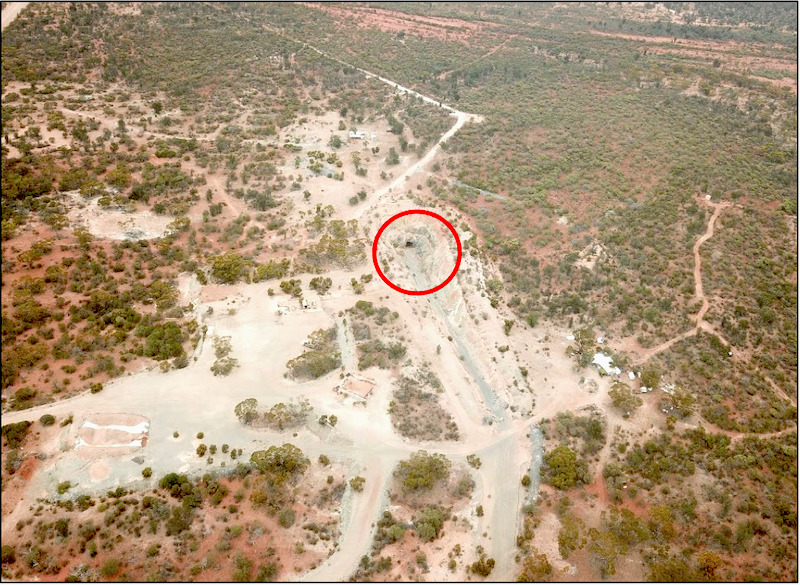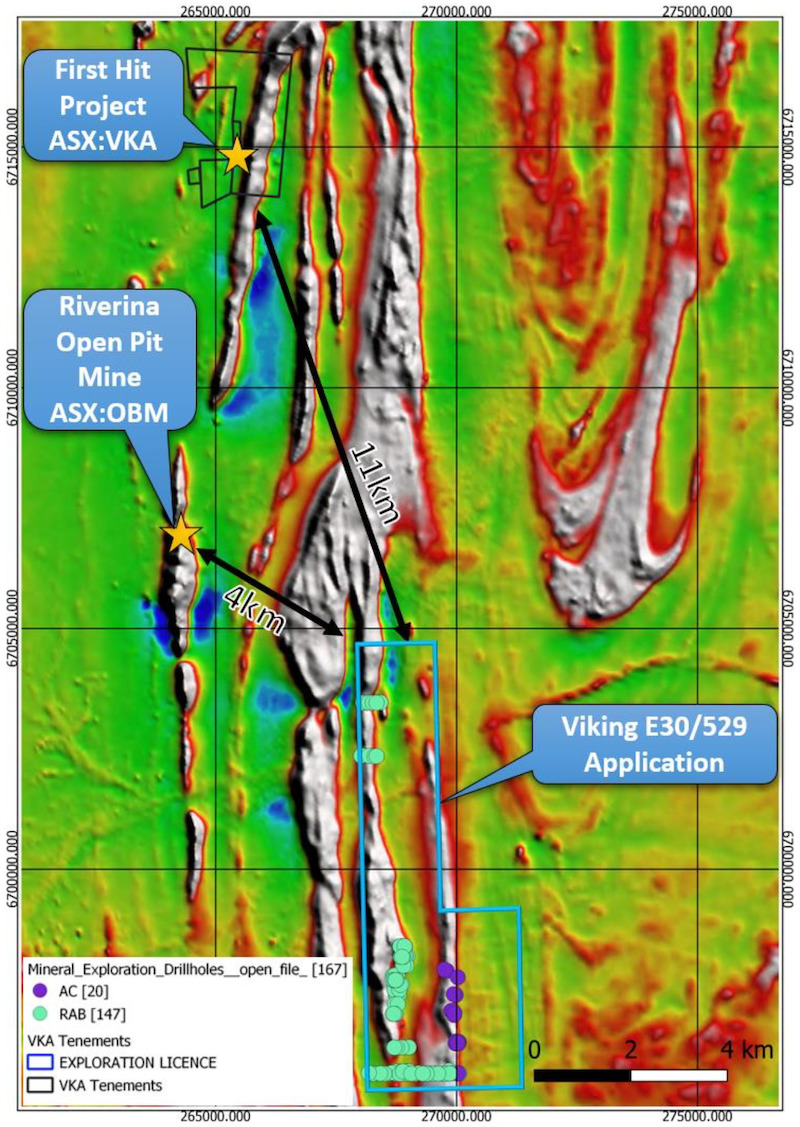Speed, experience and colour to guide Viking at First Hit

Pic: Tyler Stableford / Stone via Getty Images
Special Report: Speed and discipline will underpin the Viking Mines exploration strategy at its First Hit project in 2021, as the junior ushers in a new era under recently appointed CEO Julian Woodcock.
An exploration geologist with involvement in some of the country’s biggest gold finds in recent times, Woodcock was tapped to lead the board of Viking Mines (ASX:VKA) in early January fresh off its landmark deal for Red Dirt Mining.
The headline asset in that deal is the historic First Hit gold mine – an underexplored Eastern Goldfields gold project shuttered in the early 2000s on the back of low gold prices where mineralisation remains open in all directions.
The project looms as a company-changer for VKA, and in Woodcock they’ve found a leader whose work is intrinsically linked to the discovery and development of some of Australia’s recent large gold finds.
In his most recent role as exploration manager at Gold Road Resources (ASX:GOR), Woodcock led a large gold exploration team to discover new orebodies and define 300,000 ounces of new gold resources, while also converting 1.3 million ounces from inferred to indicated resources at the Gruyere gold mine.
Prior to that, he headed up exploration at Evolution Mining’s (ASX:EVN) Mungari operations – including the lucrative Frog’s Leg underground mine – and was also exploration manager for Gold Fields at the behemoth St Ives gold project.
They’re experiences which bode well for Woodcock as Viking gears up to explore First Hit, and he told Stockhead he planned to take a measured approach to unpacking the mineralisation at the new asset.
“Gold Fields, Evolution and Gold Road are measured with their exploration approach and look to achieve specific objectives with each drill programme – the term I like to use is disciplined exploration,” he said late last week.
“What it means is we don’t necessarily expect to hit the orebody straight away. We take it steady and we define a series of key steps and hurdles.
“The first step I’m looking at right now for First Hit is to unpick the geology around the First Hit mine and tenements.
“We’re in the process of having all the magnetics reinterpreted so we can put together a comprehensive structural and lithological geology map which will help us look for repeats of mineralisation along strike.
“I describe this as like colouring by numbers – you put the bedrock picture together without clarity around the rock types and as you get samples of the bedrock you can colour in parts of the map. As you learn more about the bedrock the whole picture becomes clearer.”
While colouring in the First Hit geological picture, VKA is also running through the data acquired with the transaction to get a feel for the characteristics of the mineralisation and planning a diamond drilling program to further understand the host rocks.
“At Frog’s Leg, where I worked with Evolution, you had the presence of sedimentary units in contact with the basalts, and that influenced where the mineralisation came and went, and stopped and started,” Woodcock said.
“We need to understand if there is an influence like that at First Hit. If we go and drill a hole through there, get a good look at the geology and tie it in with the existing data, we may be able to see if there’s a key which will enable us to look along strike and start looking for repeat shoots.
“For me, repeat shoots are a much more significant prize than depth extension as they can be accessed and tested much quicker. That said, depth extensions at first hit are definitely something we will be testing for as well.”
The entire philosophy is underpinned by truly understanding the asset.
“Anyone can go drill holes, but we’re going to be moving First Hit with pace and impetus on making sure we’re drilling holes in the right spot – that’s what we need to do,” Woodcock said.
“We’re moving fast and focused on maximising the opportunity.”
The opportunity at hand
At First Hit, Viking will be hopeful of colouring a compelling canvas with a rich history of open mineralisationand a surprising lack of modern exploration.
The deal to pick up Red Dirt Mining – the owner of First Hit – is due to be completed on January 29 and brings with it a historic high-grade mine barely touched since 2002.
Mineralisation at First Hit is open in all directions from the historic resource, with assays reported by Barra Resources in 2002 returning the following results.
Below the historic mineral resource:
- 9m at 64.8 grams per tonne gold from 62.1m;
- 7m at 22.2g/t gold from 64.3m;
- 5m at 10g/t gold from 55.8m;
- and 3m at 9.3g/t gold from 273m.
Laterally adjacent to the historic mineral resource:
- 3m at 77.6g/t gold from 224m;
- 1m at 66.7g/t gold from 164m;
- and 1m at 15.4g/t gold from 255m.
Above the mined workings:
- 4m at 26.1g/t gold from 58m in an un-stoped area;
- 2m at 13.1g/t gold from 27m above the highest level mined;
- 2m at 5.1g/t gold from 18m near surface splay;
- and 4m at 2.3g/t gold from 38m near surface splay.
The project was only historically mined to around 220m, and when closed in 2002 it was uneconomic despite producing at cash costs of just US$345 per ounce.

It was an opportunity too good to pass up for an explorer like Woodcock.
“What really appealed to me with Viking was the transaction with First Hit coming in,” he said.
“The previously mined high grades are really appealing and bodes well to find more high grade. In many settings, where there’s gold there’s usually more gold.
“There no obvious reasons why mineralisation would be closed off from what I’ve seen so far looking at the project and that’s why we need to understand the geology to target extensions from the mineraliastion.
“I also found from meeting the board that they’re hungry to grow the organisation in WA, so this project gives a starting point to get a foothold and get an asset up and running, while looking to bring other projects into our portfolio.”
Wasting no time
The intent to expand is best shown in practice by Viking’s recent application for a tenement 11km to the south of First Hit in Woodcock’s first week on the job.
The 21km2 tenement has a substantial impact on Viking’s landholdings in the Eastern Goldfields, increasing its grip on the lucrative postcode fivefold and providing a second canvas for Viking to colour in its numbers.
Initial geophysics over the tenement show significant variations in magnetic intensity in the area, a tantalising sign for those with local knowledge of an area where magnetic highs, interpreted mafic rock units and regional shear zones imply prospectivity for gold.
WA government datasets show very limited exploration drilling on the tenement. Last exploration took place with a 20-hole aircore program carried out by Salazar Gold.
That tenement sits adjacent to Ora Banda Mining’s (ASX:OBM) Riverina open pit mine and underground resource.
Its location, along with that of First Hit, leaves it strategically placed 150km northwest of Kalgoorlie and within a 100km radius of some four operating mills – among some of the best territory a gold explorer could find anywhere in the world.

This article does not constitute financial product advice. You should consider obtaining independent advice before making any financial decisions.
Related Topics

UNLOCK INSIGHTS
Discover the untold stories of emerging ASX stocks.
Daily news and expert analysis, it's free to subscribe.
By proceeding, you confirm you understand that we handle personal information in accordance with our Privacy Policy.








